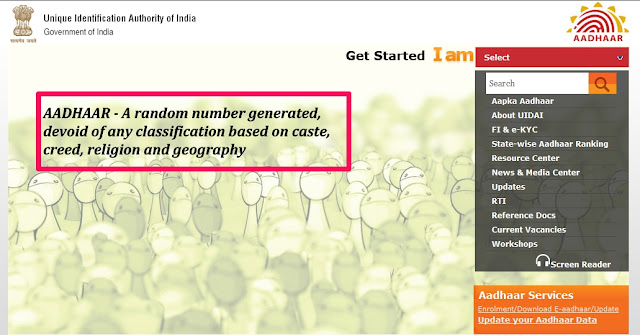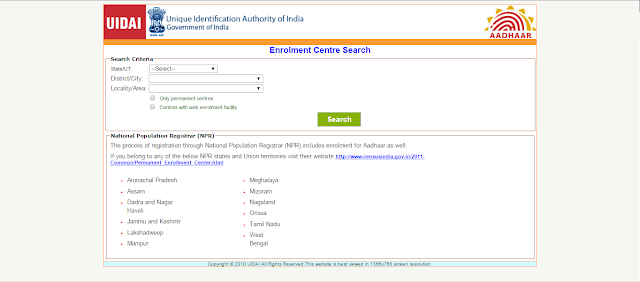What is Aadhar Card? Well, a simple answer is – Aadhar card is a 12-digit unique identity number issued by the Unique Identification Authority of India (UIDAI) is a central government agency of India to each resident. It is considered the world’s largest national identification number project. But is not that simple. It is an important document and a lot of thought has gone behind this one. Let us find out more about What is Aadhar Card in detail.
What is Aadhar Card?
Aadhar card is a number that serves as a proof of identity and address, anywhere in India.
Aadhar Card and the Benefits it has
Aadhar card is a voluntary service that every resident of India can avail irrespective of present documentation they may have. It establishes uniqueness of every individual on the basis of demographic and biometrics – fingerprints and retina scans.
Click to know How to Link Aadhar to your Voter ID Card
How you can avail LPG subsidy with your Aadhar Card – Click Here
So, we know What is Aadhar; Now let’s see How to Apply for Aadhar Card?
Once the application process is completed you need to track the status of your Aadhar Card
A brief history of Aadhar card
The Unique Identification Authority of India (UIDAI) was set up by the Government of India on 28 January 2009 as an attached office of the erstwhile Planning Commission of India vide its a gazette notification. The UIDAI is mandated to assign a 12-digit unique identification (UID) number (termed as Aadhar) to all the residents of India. As per the notification, the UIDAI has been given the responsibility to lay down plan and policies to implement UID scheme, to own and operate the UID database and be responsible for its updation and maintenance on an ongoing basis.
The implementation of UID scheme entails generation and assignment of UID to residents; defining mechanisms and processes for interlinking UID with partner databases; operation and management of all stages of UID life cycle; framing policies and procedures for updation mechanism and defining usage and applicability of UID for delivery of various services among others.
What is Aadhar Card?
Aadhar card is a number that serves as a proof of identity and address, anywhere in India.
- Any individual, irrespective of age and gender, who is a resident in India and satisfies the simple verification process laid down by the UIDAI, can enroll for Aadhaar.
- The enrollment is free of cost and needs to be done once voluntarily (it is not mandatory).
- Aadhar can be applied for even kids as young as 1 year.
To get Aadhar Card for yourself, check the process here.
Aadhar Card and the Benefits it has
Aadhar card is a voluntary service that every resident of India can avail irrespective of present documentation they may have. It establishes uniqueness of every individual on the basis of demographic and biometrics – fingerprints and retina scans.
- Aadhar number can also be linked to services like banking, mobile phone connections and other Govt and Non-Govt services. It is very convenient in use as it can be easily verified online and therefore lowers the risk of fake ID proofs.
Click to know How to Link Aadhar to your Voter ID Card
How you can avail LPG subsidy with your Aadhar Card – Click Here
- The number generated is also random devoid of any biases on the basis of caste, class, religion or geographical location.
- MNREGA workers can receive their wages on time and directly in their accounts.
- Used in Know Your Customer (KYC) authentication for insurance, Demat account, mutual fund schemes, Landline and Mobile phones, vehicle purchase and new gas connections.
- You can get a number of Govt. processed done faster with Aadhar Card – Like you can now get your Passport in 7 days with Aadhar Card, click here for the full story.
So, we know What is Aadhar; Now let’s see How to Apply for Aadhar Card?
- To apply for Aadhar card go to any authorized Aadhar enrollment center anywhere in India with your identity and address proof. Here is how to find the enrollment center near you click here.
- Fill out the forms that are available for free at the center itself, or you may choose to download it online. It is advisable to download, take a print out and go to the Aadhar card center with the already filled application form(s) to save time at the center.
- At the time of enrollment, your photo, finger-prints and iris scan will be taken. Carefully review the details you have provided and make corrections, if any, during the enrollment itself.
- During enrollment, you will receive an acknowledgment slip, till the time you don’t receive your original Aadhar Card copy.
- The information details will be verified centrally before you are issued Aadhar Card. Here is a list of documents that you need while applying for your aadhar card.
- On successful verification, you will first receive an SMS and/or email notification and later after a few days your Aadhar number will be printed and sent to your address through post.
- To know more details on how to apply for aadhar card click here.
Once the application process is completed you need to track the status of your Aadhar Card
- Check What is Aadhar Card Status after enrollment from here.
- In the next page enter your enrollment id and date and time of enrollment.
- Now you will see the status of your aadhar card.
- If your aadhaar has been generated. You may track aadhar card postal status after 10 days.
- You can also download your aadhar card here.
A brief history of Aadhar card
The Unique Identification Authority of India (UIDAI) was set up by the Government of India on 28 January 2009 as an attached office of the erstwhile Planning Commission of India vide its a gazette notification. The UIDAI is mandated to assign a 12-digit unique identification (UID) number (termed as Aadhar) to all the residents of India. As per the notification, the UIDAI has been given the responsibility to lay down plan and policies to implement UID scheme, to own and operate the UID database and be responsible for its updation and maintenance on an ongoing basis.
The implementation of UID scheme entails generation and assignment of UID to residents; defining mechanisms and processes for interlinking UID with partner databases; operation and management of all stages of UID life cycle; framing policies and procedures for updation mechanism and defining usage and applicability of UID for delivery of various services among others.



Comments
Post a Comment